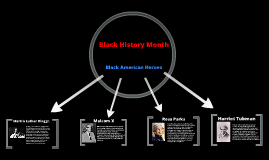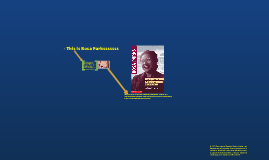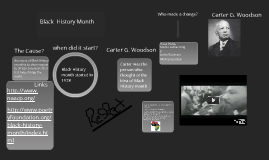Black History Month
Transcript: Dr. Charles Richard Drew was the first person to develop the blood bank. His introduction of a system for the storing of blood plasma revolutionized the medical profession. Drew first utilized his system on the battlefields of Europe and the Pacific during World War II. He organized the world's first blood bank project in 1940 - Blood for Britain. He also established the American Red Cross Blood Bank, of which he was the first director. Drew was born in Washington, D.C. June 3, 1904 to Richard and Nora Drew, and was the oldest of five children. In his youth he seemed headed for a career in athletics and the coaching field rather than for medicine, starring as a four letter man in Dunbar High School, Washington. He went on to study at Amherst College, where he was a star athlete, all-American half-back and captain of his Amherst College football team. In 1941, Dr. Drew returned to Howard University, where he gained new distinction, particularly in the training of young surgeons. He had spent a total of seven months in the two blood projects, yet in this very brief but productive period of his professional life, he made an outstanding contribution to what was to become a highly successful World War II blood procurement effort. He researched blood plasma and transfusions in New York City. It was during his work at Columbia University where he made his discoveries relating to the preservation of blood. By separating the liquid red blood cells from the near solid plasma and freezing the two separately, he found that blood could be preserved and reconstituted at a later date. Mankind suffered a great loss in 1950 when, at the age of 45, Dr. Drew was killed in an automobile accident while driving to a scientific conference. His pioneering medical work has endured. How many lives have been saved because of his genius at turning basic biological research into practical production methods is impossible to determine. But it is a certainty that mankind owes a debt of gratitude to Charles Richard Drew. http://inventors.about.com/library/inventors/bldrew.htm http://www.ideafinder.com/history/inventors/drew.htm Blood+Bank= :D Subject 3 Subject 3 Conclusion Born: June 3,1904 Dr. Drew was married in 1939 to Minnie Lenore Robbins, and they had four children, Bebe Roberta, Charlene Rosella, Rhea Sylvia, and Charles Richard, Jr. Shortly after, Dr. Drew earned his Doctor of Medicine degree from Columbia University in 1940, with a 200 page doctoral thesis under the title "Banked Blood: A Study in Blood Preservation". Charles R. Drew The Blood Bank Saves Lives!

















